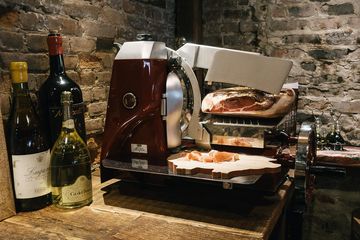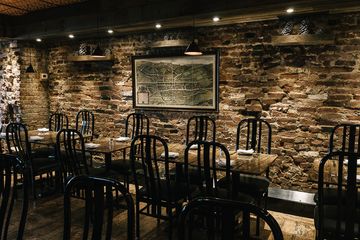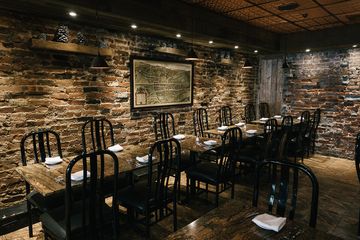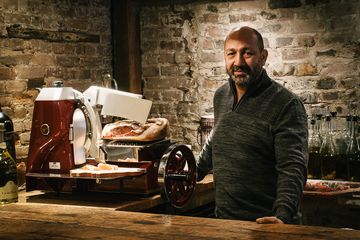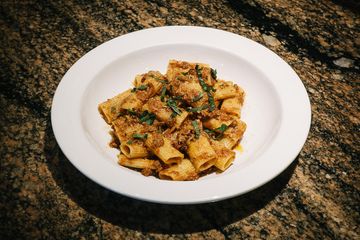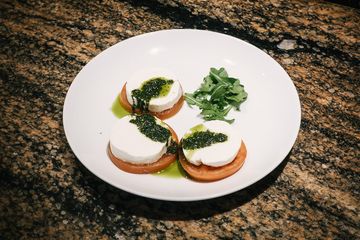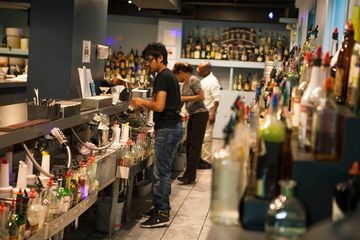
When I walked into Biricchino alongside Fouad Alsharif, it was like stepping inside his home. Fouad, one of the owning partners of the restaurant, greeted each person inside with hugs, kisses, and warm conversation. I remembered a comment that I had heard from a different restaurateur not long ago: He was reacting to the lack of loyalty from customers in his neighborhood. In his opinion, there are too many restaurants to choose from, nowadays. People are eager to try them all rather than give consistent business to two or three. I understood his concern, however, I must say that Biricchino has proven him wrong - at least in this particular spot in Manhattan. "I know everyone, generation after generation," Fouad said. It helps that the family behind Biricchino (which means “naughty boy”) as been in the food business for over ninety years.
“Today we are a new generation of men, but we all came from Curino, a small town in Italy in the province of Biella," Fouad explained. “In 1925 Salumeria Biellese opened on 28th and Eighth Avenue. This is where the men got their start.” Today, Salumeria Biellese is known as "the" salami and sausage maker in the industry. “Some of the biggest people in New York purchase their meat from us," says Fouad. Sure enough, one corner of the restaurant has cured meats hanging with a high-end slicer waiting nearby. Biricchino opened in 1986 not only to showcase their handmade meats, but also homemade pasta, mozzarella, and more.
Fouad stressed that good food starts with good ingredients. “We are second to none for quality. All our meat is natural and local to the Berkshires or New Jersey, from our hogs and grass-fed beef to our chickens raised on an Amish farm. Everything is done according to our specifications. We also feature seasonal vegetables from New Jersey and fresh breads from Sullivan Street Bakery.” As proof that Biricchino is the real deal when it comes to high quality and healthy practice, the restaurant was the first in the industry to receive the “Snail of Approval” from the Slow Food movement (in honor of commitment to authenticity and sustainability of the food supply in NYC). “This is a big deal to those in the know,” Fouad added proudly.
The chef is proud of his pasta, fresh fish, chicken, and, of course, pork chop. Each day he tries to mix up the menu a bit so that he is certain to appeal to the different crowds stopping by for lunch or dinner. As far as crowd favorites, Fouad had a ready answer: “Rigatoni with homemade sausage has been our signature dish for years. That and the cured salami has kept customers coming back for a generation and counting.”

